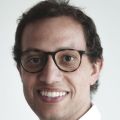Subscribe to the Interacoustics Academy newsletter for updates and priority access to online events
Training in Pure Tone Audiometry (PTA)
What is Temporal Summation?
Description
Temporal summation occurs when the human ear integrates energy over time, which stems from a continuous sound.
Explanation
It is well established in the scientific literature (e.g. Zwislocki in the 1960s) that the absolute threshold of a sound depends on its duration. If the sound duration is longer than 500ms then absolute threshold is independent of sound duration, but below 500ms the threshold increases (and loudness decreases) as the duration gets less. This is especially apparent below 200ms and is the reason why most normal hearing people can listen to a click (broadband) at pretty high intensities (say 90 – 100 dB nHL) and not regard it as uncomfortably loud at all. The click is too short to integrate enough energy for the sound to become uncomfortably loud, even at high intensities. If the sound became continuous instead of transient then the click would essentially become a white noise, and then it might begin to feel uncomfortably loud pretty quickly…intensity is measured as energy per unit time. The ear integrates this energy over time, which is known as temporal summation. Perceptual threshold improves by about -3dB per doubling of duration up to 500ms according to the Zwislocki model, but that is an average value. It is very variable amongst individuals.
Presenter

Get priority access to training
Sign up to the Interacoustics Academy newsletter to be the first to hear about our latest updates and get priority access to our online events.
By signing up, I accept to receive newsletter e-mails from Interacoustics. I can withdraw my consent at any time by using the ‘unsubscribe’-function included in each e-mail.
Click here and read our privacy notice, if you want to know more about how we treat and protect your personal data.
